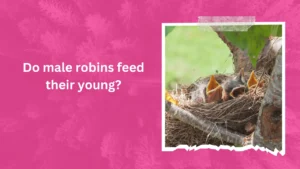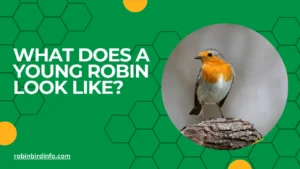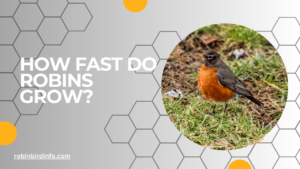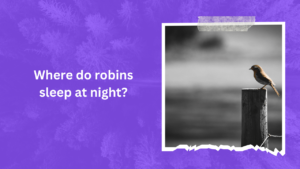Have you ever peeked out your window to witness the heartwarming sight of a Robin family?
Perhaps you’ve marveled at the tiny chicks chirping from a nest nestled amongst the branches, or watched the proud parents tirelessly delivering a constant stream of juicy worms. But where exactly do these industrious birds raise their young?
Natural cavities in trees are their preferred nesting spots, but with habitat loss on the rise, Robins can struggle to find suitable homes. This is where you, the nature enthusiast, can step in and play a vital role!
By building a bird box, you can offer these cherished songbirds a safe haven to raise their next generation right in your own backyard.
Imagine the joy of witnessing the entire breeding cycle up close – from the flurry of activity building the nest to the heartwarming sight of fledglings taking their first flight. Building a bird box is an incredibly rewarding project, not only for you, but for the entire local ecosystem. So, grab your tools and get ready to become a landlord to these delightful feathered tenants!
This guide will equip you with all the knowledge and step-by-step instructions needed to create the perfect Robin condo, transforming your backyard into a haven for these enchanting birds.
Contents
- 1 Section 1: Understanding Robin Nesting Preferences
- 2 Section 2: Materials and Tools
- 3 Section 3: Building the Bird Box
- 4 Section 4: Placement and Installation
- 5 Section 5: Maintenance and Monitoring
- 6 Conclusion
- 7 FAQ’s
- 7.0.1 When is the best time to put up a bird box?
- 7.0.2 What kind of wood should I use for a bird box?
- 7.0.3 How often should I clean the bird box?
- 7.0.4 Can I paint the bird box?
- 7.0.5 How do I deter predators from the bird box?
- 7.0.6 What should I do if I find a baby bird that has fallen out of the nest?
Section 1: Understanding Robin Nesting Preferences
Nest Site Selection: Robins prefer to nest in sheltered locations, often in trees or shrubs. They look for sites that are protected from wind, rain, and predators. A bird box should be placed in a location that mimics these natural conditions.
Nest Box Design: A well-designed bird box should be sturdy, weatherproof, and provide a safe and comfortable nesting site for Robins. Key design considerations include:
- Dimensions: The interior dimensions should be approximately 6 inches wide, 6 inches deep, and 8 inches high.
- Entrance Hole: The entrance hole should be 1.5 inches in diameter.
- Drainage Holes: Small drainage holes should be drilled in the bottom of the box to prevent water accumulation.
Section 2: Materials and Tools
Choosing the Right Materials: The best materials for a bird box are weather-resistant and durable. Cedar and pine are popular choices due to their resistance to rot and decay.
Required Tools: To build a bird box, you will need the following tools:
- Saw
- Drill
- Screwdriver
- Screws
- Measuring tape
- Pencil
Section 3: Building the Bird Box
Step-by-Step Instructions:
- Cut the Wood: Cut the wood into the required dimensions for the front, back, sides, and roof.
- Assemble the Box: Screw the sides, back, and front panels together.
- Attach the Roof: Attach the roof to the back of the box using screws.
- Drill the Entrance Hole: Drill a 1.5-inch diameter hole in the front panel.
- Add Drainage Holes: Drill small drainage holes in the bottom of the box.
Tips for Successful Construction:
- Use weatherproof screws to ensure the bird box will last for many years.
- Make sure the edges of the wood are smooth to prevent injury to the birds.
- Apply a weather-resistant sealant to the joints to prevent water damage.
Section 4: Placement and Installation
Choosing the Right Location:
- Height: Place the bird box 5-10 feet above the ground.
- Orientation: Position the entrance hole facing away from prevailing winds and direct sunlight.
- Protection from Predators: Place the bird box in a location that is protected from cats and other predators.
Mounting the Bird Box:
- Tree Mounting: Attach the bird box to a tree trunk using a sturdy bracket.
- Post Mounting: Mount the bird box on a sturdy post or pole.
- Building Mounting: Attach the bird box to a building wall, ensuring it is protected from direct sunlight and rain.
Section 5: Maintenance and Monitoring
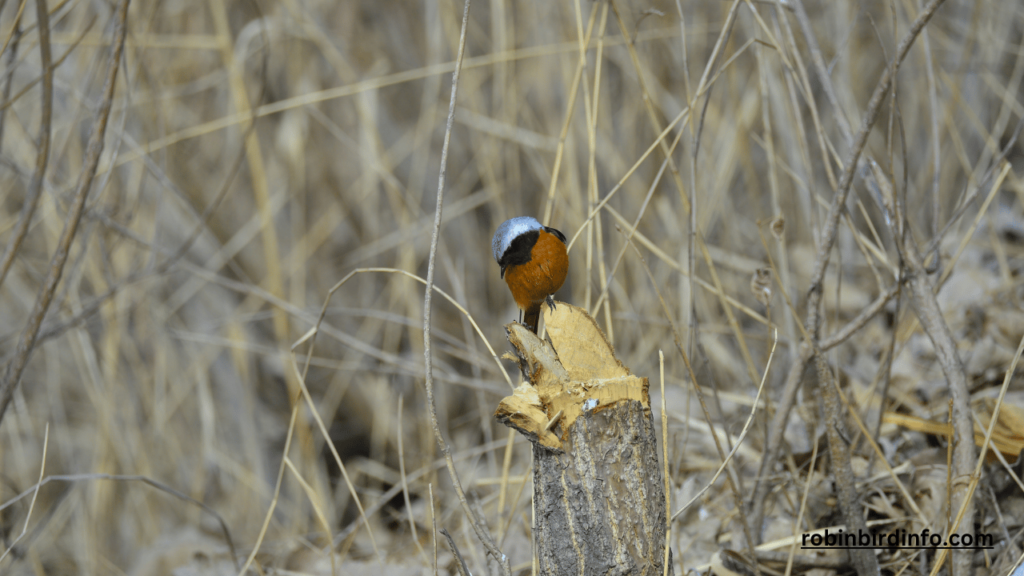
Regular Cleaning: Clean the bird box after each breeding season to remove old nesting material and prevent the buildup of parasites.
Monitoring Nest Activity: Monitor the bird box for signs of nesting activity, such as the presence of nesting material or eggs. Avoid disturbing the birds during the nesting period.
Winterizing the Bird Box: In colder climates, remove the nesting material after the breeding season to prevent it from becoming damp and attracting pests.
Conclusion
Building a bird box is a rewarding experience that can provide a safe and comfortable home for Robins and other cavity-nesting birds. By following these guidelines and tips, you can create a welcoming environment for these feathered friends and enjoy the joy of watching them raise their young.
Remember to observe wildlife ethically and avoid disturbing nesting birds. By providing a suitable nesting site, you can contribute to the conservation of these beautiful creatures.
FAQ’s
When is the best time to put up a bird box?
The best time to put up a bird box is in the late winter or early spring, before the breeding season begins. This gives the birds ample time to find and inspect the box.
What kind of wood should I use for a bird box?
Cedar and pine are excellent choices for bird box construction as they are weather-resistant and durable. Avoid using treated lumber as it can be harmful to birds.
How often should I clean the bird box?
It’s recommended to clean the bird box once a year, preferably in the late fall or early winter. Remove any old nesting material and debris to prevent the buildup of parasites and diseases.
Can I paint the bird box?
While painting a bird box can make it more visually appealing, it’s important to use non-toxic paint. Avoid using bright colors that may attract predators.
How do I deter predators from the bird box?
To deter predators, consider placing the bird box in a location that is difficult for cats and other predators to reach. You can also use baffles or predator guards to protect the box.
What should I do if I find a baby bird that has fallen out of the nest?
If you find a healthy baby bird that has fallen out of the nest, gently place it back in the nest. If the parent birds are not around, you can contact a local wildlife rehabilitator for advice.


